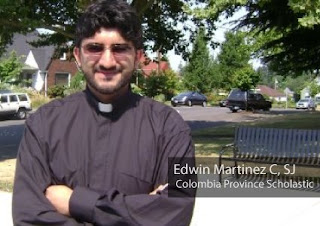 One theology which has become many
One theology which has become manyTue, Sep 30, 2008
RITE AND REASON:Will a conference in Dublin this week to mark 40 years of Liberation Theology become a postmortem, asks Maria Duffy
ALONGSIDE the utopian projects of Stalin, Hitler and Mao, who murdered millions in their attempts to transform the world, other projects also emerged which sought to imagine a radically better planet.
Significant among them are the Universal Human Rights Movement, which began 60 years ago, and Liberation Theology, which had its genesis in 1968 at the now-mythical Latin American Bishops Conference of Medellin, Columbia.
An international conference to be held at Dublin's Milltown Institute on Friday and Saturday of this week will reflect on one of the most significant ecclesial movements and social forces of the 20th century.
It will also ask the large question: was Liberation Theology a broad-based theological movement or was it simply an historical moment akin to the student protests of May 1968 in Paris?
In Latin America at the time, poverty, malnutrition, lack of housing, unemployment, non- existent health services, the very extent of human suffering across many different cultures, nations and societies fuelled the rapid growth of Liberation Theology.
Although a vast number of writers and activists in both Catholic and Protestant traditions shared in the construction of this new theology, four theologians in particular were influential, even beyond Latin America.
Already in 1960, Uruguayan Jesuit Juan Luis Segundo was already urging the Church to respond to the particular political and social situation of his own region.
After the Medellin synod, Peruvian Gustavo Gutierrez published A Theology of Liberation which canonised the Liberation Theology label. Gutierrez called attention to the poor of Latin America and challenged the Church to help change the economic and political systems that fostered social injustice.
Brazilian Franciscan Leonardo Boff developed methods of liberation while the work of Jon Sobrino, a Basque Jesuit teaching in El Salvador, also gained international prominence.
In 1989 he escaped right-wing death squads which claimed the lives of six Jesuits at their university campus.
The movement gained strength under outspoken Church leaders such as El Salvador's Archbishop Oscar Romero, who was killed in 1980.
For all its dynamism, though, and unlike the international human rights movement which has established itself as the benchmark of civilised nations, Liberation Theology had run aground by the 1990s, due in part to criticisms by governments and by the Vatican.
Disturbed by what it considered Marxist overtones of class struggle, the Congregation for the Doctrine of the Faith (CDF), under the current pope, then Cardinal Joseph Ratzinger, issued two cautionary documents.
Its Instruction on Certain Aspects of the Theology of Liberation(1984) and Instruction on Christian Freedom and Liberation(1986) distanced Church social teaching from political activism.
The accusations that have beset the Liberation movement are also those which challenge the wider Catholic social agenda: to seek a balance between collectivism and individualism and defend the rights of the poor, while accepting the reality of the dominant global capitalist system.
Outside of Latin America, it has been argued that the South African Kairos Document(1985) and the anti-apartheid struggle were inspired by Liberation Theology, but it is not clear how wide its influence spread.
In Asia too, theologians acknowledge the debt owed to the movement started at Medellin.
A keynote speaker at this week's Dublin conference will be influential Asian theologian Peter Phan whose work has also caught the attention of Rome's CDF.
He criticises the dehumanising poverty that continues to crush immense masses in Asia and asks: "How can Christianity help Asian people to become subjects of their future and facilitate their struggle for liberation in the aftermath of oppression, economic exploitation and a communist regime?"
The new generation of Liberation Theology may well have its locus in Asia which has now produced several variations on the theme, including Minjung theology in Korea, Dalit theology in India and the Theology of Struggle in the Philippines.
While it began 40 years ago in the heady days of Medellin, it is now clear that Liberation Theology has morphed into several different movements all over the world - Black, African, Womanist and Feminist, to name but a few.
As Jon Sobrino, who has more than 40 years of experience of working with the poor in El Salvador, put it: "As long as there is oppression there is need of a utopia - a dream of God."
• Dr Maria Duffy teaches at the Milltown Institute of Theology and Philosophy. Conference details on www.milltown-institute.ie
© 2008 The Irish Times
Link (here)
 In the center of a Toledo church known for its architectural and artistic beauty, a Catholic theologian from New York gave a lecture this week on the value of ugliness.
In the center of a Toledo church known for its architectural and artistic beauty, a Catholic theologian from New York gave a lecture this week on the value of ugliness.




















 Most of the world knows them only as long distance runners. Living in high altitudes, they have developed tremendous lung capacity and in more primitive times hunted deer and mountain goats, running them down on foot. In more modern times, they have run non-stop in relay teams from Chihuahua City to El Paso, a distance of 230 miles, to open the Pan-American Road Races.
Most of the world knows them only as long distance runners. Living in high altitudes, they have developed tremendous lung capacity and in more primitive times hunted deer and mountain goats, running them down on foot. In more modern times, they have run non-stop in relay teams from Chihuahua City to El Paso, a distance of 230 miles, to open the Pan-American Road Races. 











